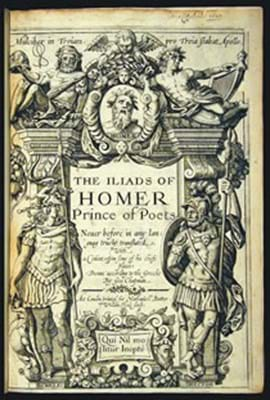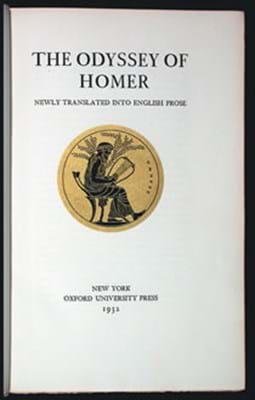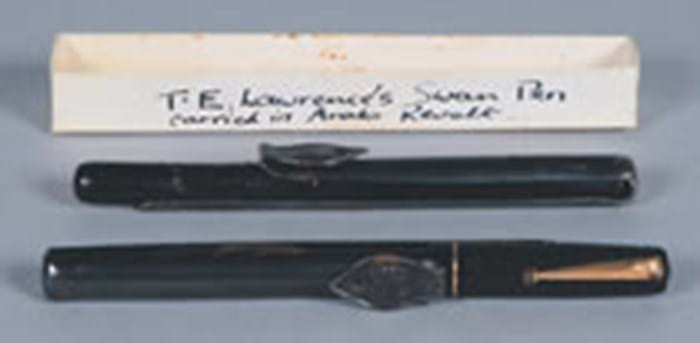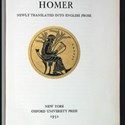Bound together in modern reversed calf in the antique style, they were offered in a PBA Galleries of San Francisco sale of February 24. The Odysses lacked a couple of preliminaries and there were various other defects which affected the price of this set of the translations that, two centuries on, was to be commended in sonnet form by Keats to all those who had not previously thought to "look into" it. This copy was valued at $6000-9000, but sold for just $5000 (£2600).
The San Francisco cataloguer described the set as comprising the first Chapman editions, printed for Nathaniel Butter of London, c.1611-13?, but Chapman's translations of Homer had begun to appear as early as 1598, with Seven Books of the Iliades and, in that same year, a portion of the 18th book that was issued under the title, Achilles Shield. Around 1609, the first 12 books were issued complete and then, in 1611, the complete Iliad was published. The Odysses seem to have been first issued in 1613, or perhaps 1614, and the first complete appearance of Chapman's Homer as The Whole Works, printed by Richard Field and William Jaggard for Butter, in 1616, or thereabouts. That was not quite the end of Chapman's Homeric labour, for it was not until 1624 and the publication of his own translation of the mock-heroic poem, The Crowne of all Homers Worckes: Batrachomyomachia; or the Battaile of Frogs..., that he felt able to offer the valediction, "The Worke that I was borne to doe, is done".
The title page of a first American edition of T.E. Lawrence's translation of the Odyssey is seen right. Five hundred and thirty copies of this edition, commissioned and designed by Bruce Rogers after reading Seven Pillars..., were published in England in 1932 and just 34 in New York, of which 11 were bound in full vermillion morocco, as in the copy seen in the Californian sale. There was some discolouration to the leather, which was also a bit dry, but it was internally clean and partly unopened, and it too sold for $5000, or £2600.
Tom Beaumont, who died in 1991, served under Lawrence as a member of the Hejaz Armoured Car Company - indeed a 1935 article in the Daily Express described him as "a machine-gunner in the 'Suicide Club', a detachment of 26 men sent to Arabia in 1917 for secret service work under Lawrence". In a letter that he wrote to his future wife, he described how he came to acquire the two broken and tape-repaired Swan fountain pens seen below right, pens that once belonged to Lawrence of Arabia: "They were trodden on by a camel and broke. I exchanged them and let him have one of mine in good condition... accept them with my love. They may be worth something one day!"
Dominic Winter, in whose sale of March 2 they came up for sale, reckoned that one of them could yet be repaired, but whether they are to be restored or remain a.c.c. (as camel crushed), will be up to Moorside Books, who gave £1350 for them.
Concerning Homer, Lawrence, a clumsy camel and broken pens
ILLUSTRATED top right is William Hole’s engraved title page for The Iliads from a copy of George Chapman’s first English translation of The Iliads of Homer, Prince of Poets and The Odysses.










